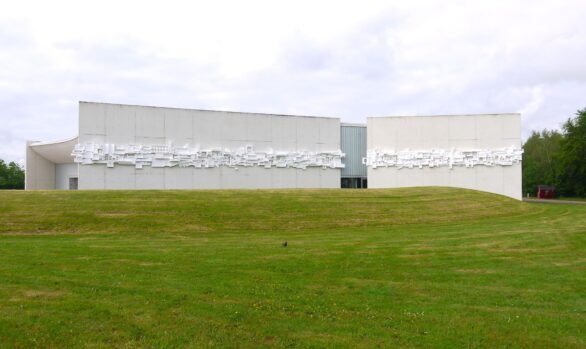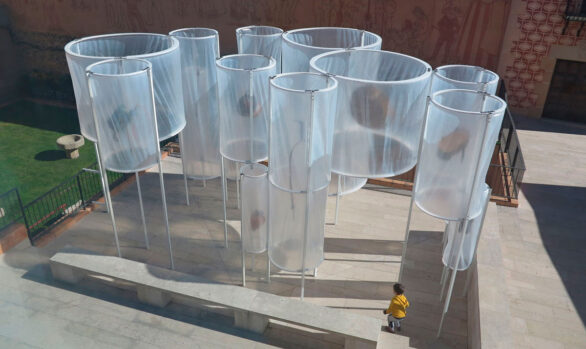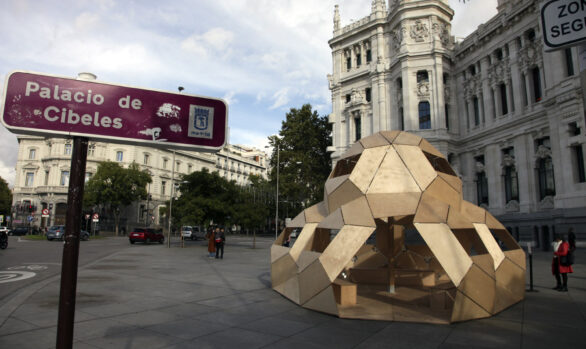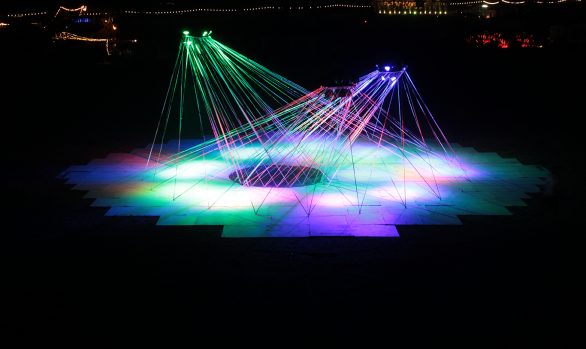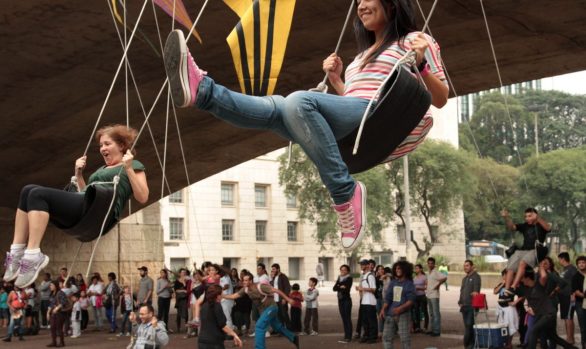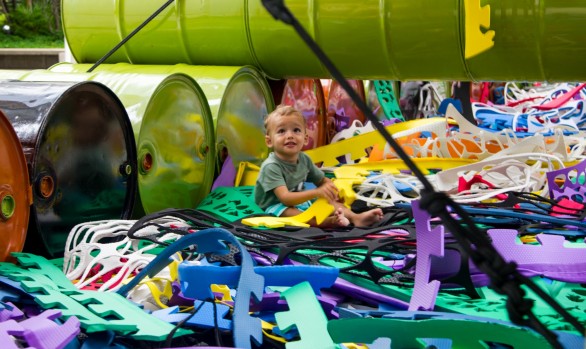Invisible Drifts
InstallationInvisible Drifts proposes a reflection on the enormous amount of plastic waste present in our marine ecosystems, increasingly contaminated especially by nets and elements used in the fishing industry.
According to marine pollution studies carried out in 2018, around 85% of the waste found in the ocean worldwide is made up of lost or deliberately abandoned fishing nets or gear. In the Great Pacific Garbage Patch, the presence of elements from the fishing sector is estimated at 46% of the total 79 thousand tons of plastic. These abandoned nets, also known as ghost nets, not only pollute the seabed but are responsible for entangling and suffocating fish, sharks, dolphins, sea turtles, octopuses, whales, seals and even birds. Despite the widespread belief that marine pollution is mostly made up of single-use plastics such as plastic bottles, bags or straws, the presence of these ghost nets is much greater.
Inspired by the traditional traps used by fishermen to catch crabs or lobsters, we propose an urban-scale art installation to reflect on this reality. For the installation, a real fishing net has been used, recovered and reused to build an urban fishing element, a waste in itself that has arrived directly from the ocean, a potentially dangerous net as a ghost net.
Invisible Drifts is an art installation for the Museu de Arte, Arquitectura e Tecnologia de Lisboa and which we inaugurated on June 25 on the occasion of the celebration of the United Nations Conference on the Oceans that took place in this same city.
Many thanks to MAAT and the entire team for the invitation and support.
With the support of the Embassy of Spain in Portugal.
Photographs by Bruno Lopes.

